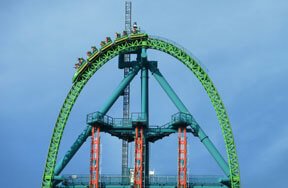Despite its name, Easter Island isn't full of giant bunnies laying brightly wrapped chocolate eggs. In fact, it's a Polynesian Island that's famous for some pretty amazing statues. Check it out!
Geography
Easter Island is one of the most isolated inhabited islands in the world. It's located in the southeastern Pacific Ocean at the most southeastern point of the Polynesian triangle. Easter Island is a territory of Chile, which is about 3,600 km (2,237 miles) east of the island. The capital of Easter Island is Hanga Roa.
A Brief History
For such a small island, Easter Island has a rich and complicated history. Most experts believe the island's original inhabitants to have been Polynesian. However, many locals say that the islands original inhabitants came from two different races - one called Hanau eepe (or Long Ears) who had fair skin and red hair, and the other called Hanau momoko (Short Ears) who were dark skinned and more generally Polynesian looking.
The first recorded [KWLINK ]European contact[/KWLINK] with the island was on April 5,1722 (which was Easter Sunday) when Dutch navigator, Jacob Roggeveen, visited the island briefly (hence the island's name). On September 9, 1888 the island was annexed by Chile under the Treaty of Annexation of the Island, which was signed with the Rapanui people who were confined to a settlement. The remainder of the island was rented out for sheep farming until 1953 when control of the island was handed over to the Chilean Navy. In 1966, the island was reopened to the public.
The Moai Statues
Easter Island is best known for its enormous stone statues called Moai. Experts believe these statues date back anywhere from 400 to 1700 AD. The statues are often thought to only show enormous heads, but they are actually of entire torsos. However, many of the statues have sunk into the earth, with only their heads showing. A total of 887 of these statues, thought to be symbols of the island's ancestors, have been found on the island.
Did You Know?
- The official languages of Easter Island are Spanish and Rapa Nui.
- Only about 3,800 people live on Easter Island.
- Easter Island's Rapa Nui National Park is an UNESCO World Heritage site.

































